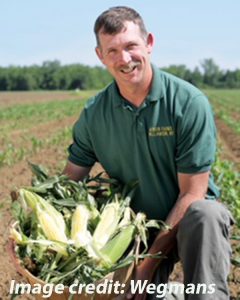The USDA and FDA on June 5 aligned the USDA Harmonized GAP audit with the FDA’s Produce Safety Rule to both streamline audits for farmers and assure them that private audits are consistent with federal produce safety rules.
“It’s important that federal regulations and private audits don’t require growers to adhere to inconsistent or conflicting requirements,” says Jennifer McEntire, PhD, vice president of food safety and technology at the United Fresh Produce Association in Washington, D.C.
“Specialty crop farmers who take advantage of a USDA Harmonized GAP audit now will have a much greater likelihood of passing a FSMA inspection as well,” said Agriculture Secretary Sonny Perdue, DVM, in a press statement. The Produce Safety Rule is part of the Food Safety and Modernization Act (FSMA).
“This is a great step forward,” says Steve Strub, manager of produce food safety at Wegmans supermarkets, Rochester, N.Y. “I hope it makes it easier for our growers.”
The harmonization process began about a decade ago in response to audit fatigue, Dr. McEntire says. United Produce, an industry association, is the secretariat for the USDA Harmonized Standard.
“It’s an issue throughout all of the food industry,” she says. “Members, even today, experience several audits per month, and one member has two per week.”
Produce industry companies noticed that many of the audits did the same thing, she says, so in June 2009 the United Fresh Food Safety & Technology Council endorsed a plan to harmonize good agricultural practices (GAP) standards.
The plan became the Produce Gap Harmonization Initiative, which included growers, shippers, produce buyers, government agencies, and audit organizations. The H-GAP came into existence in 2010, and was updated 18 months ago. USDA issues certificates to growers conforming to H-GAP audits.
The goal of the harmonized standard was to have one audit conducted by any credible third party acceptable to all buyers. That, in turn, would let food operations focus on food safety rather than on passing audits.

The harmonized audit was developed by 150 volunteer technical experts in food safety and growing and handling practices who evaluated 13 commonly used fresh produce safety standards, identified common points, and combined them into a common standard. The goal is to have one audit per year. The harmonized audit includes major buyers such as Wegmans, Subway, and Costco.
Strub says Wegmans has worked hard with its growers using the USDA Harmonized Standard, so the growers are ahead of the game to meet the FSMA Produce Safety Rule.
United Fresh says it doesn’t expect that the FDA will consider the harmonized audit or any other audit as a substitute for the regulatory inspection required by the FDA’s Produce Safety Rule. Strub expects inspections under the Produce Safety rule to begin next year.
The requirements of the FDA and USDA programs are not identical, but relevant technical components in the FDA Food Safety Rule are covered in the USDA H-GAP audit program. The alignment areas include biological soil amendments; sprouts; domesticated and wild animals’ worker training; health and hygiene; and equipment, tools, and buildings.
Dr. McEntire says the alignment required few substantive changes to the current audits. But it did require some clarity on sewage and septic systems located near produce fields.
“We needed to include criteria around what would happen if you have agricultural water that needs to be treated,” she comments.
The USDA H-GAP and FDA Produce Safety Rule alignment was proposed for comment two years ago. The two were formally aligned on June 5.
Buyers strongly influence which audit is needed by produce suppliers, Dr. McEntire says. “It’s a buyer-driven system,” adds Strub. “What the buyer wants is where the growers have to go.”
Dr. McEntire says Fresh Produce still needs to educate the market about the alignment to help reduce redundant audits. “Growers have to pay for the audits, so they can save money,” she says of the USDA/FDA alignment. “It’s a waste of effort and resources if audits are inconsistent with the Produce Safety Rule.”
Source: Food Quality And Safety
View Original Article
This article was reproduced with permission the of Food Quality & Safety and the original article can be viewed here: https://www.foodqualityandsafety.com/




